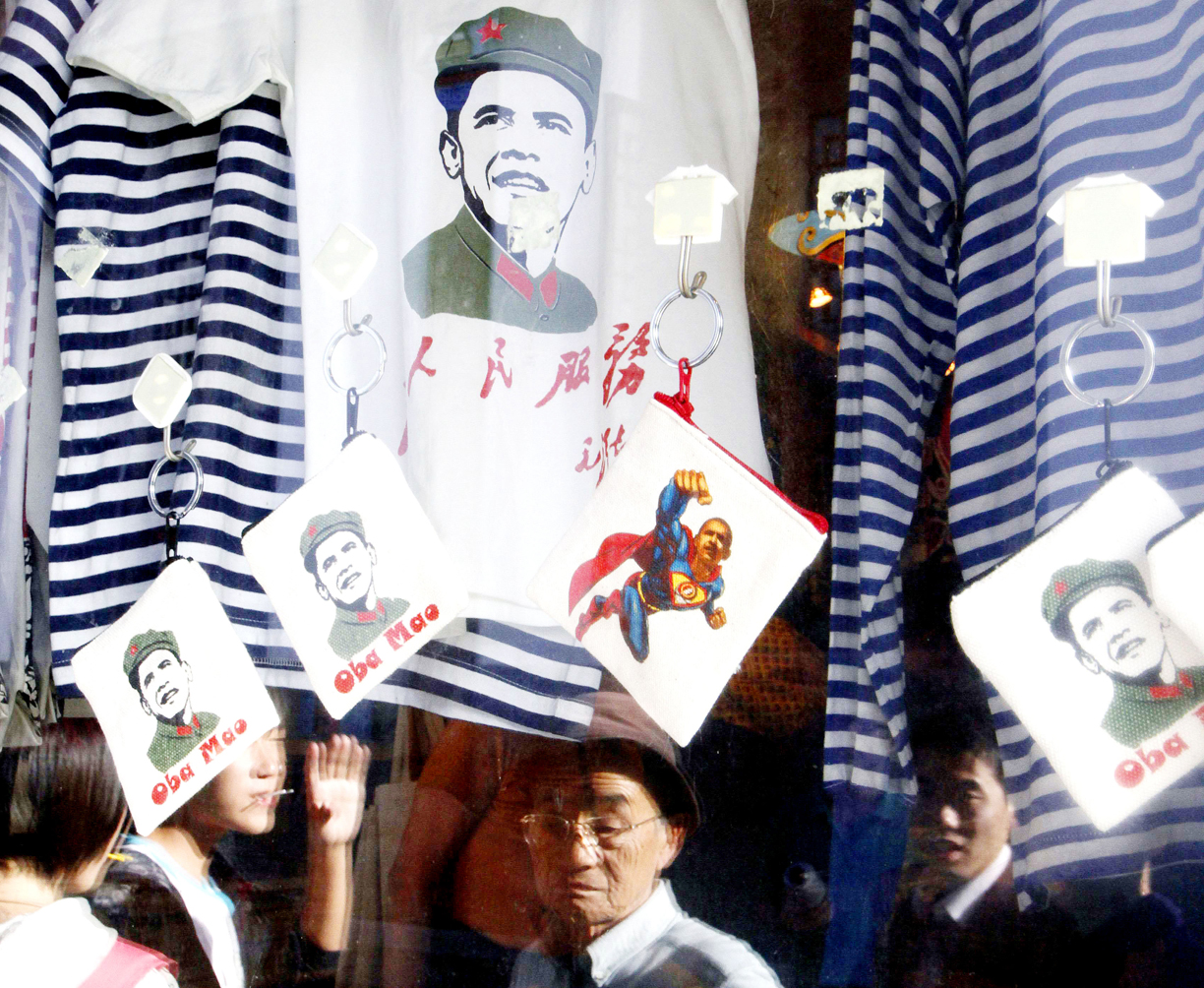The World Bank raised its growth forecast for China this year from 7.2 percent to 8.4 percent but warned yesterday a sustained recovery will require a shift in the economy to emphasize consumer spending instead of industry and investment.
The strength of China’s rebound led the bank to increase its growth forecast for developing East Asia by 1.3 percentage points to 6.7 percent, though it cautioned the region was struggling and would grow by as little as 1 percent if China were excluded.
The Washington-based bank said its higher outlook for China reflects the government’s stronger-than-expected stimulus.

PHOTO: REUTERS
But it said the impact of the stimulus would fall sharply next year and manufacturing industries will be under pressure as excess capacity at home and abroad holds down prices.
Ultimately, the World Bank said China can no longer count on exports and investment to drive growth and needs to encourage its own consumers to spend more.
“We think that now that the government has basically succeeded in dampening the impact of the global crisis, it’s a good time to concentrate and focus effort on rebalancing the economy and getting more growth out of the domestic economy,” said Louis Kuijs, the bank’s chief China economist, at a news conference.
“This calls for more emphasis on consumption and services and less emphasis on investment and industry,” he said.
The hike in the bank’s growth outlook followed a June increase from 6.5 percent to 7.2 percent. China’s rebound has helped to power other Asian economies as its consumers and factories buy imports.
“The economic rebound in East Asia and the Pacific has been surprisingly swift and very welcome, but take China out of the equation and the regional picture is less rosy,” the bank said in a report titled Transforming the Rebound into Recovery.
“The rebound has yet to become a recovery,” the report said.
Indonesia and Vietnam are doing well but output is contracting in Cambodia, Malaysia and Thailand and barely growing in Mongolia, the bank said. Industrial production in Singapore and Taiwan is 15 percent below pre-crisis levels 18 months ago.
The costs of maintaining China’s expansion will rise over time, but Beijing does not need to worry yet about hiking interest rates or reining in a surge in bank lending that has helped to fuel the rebound, the bank’s report said.
“However,” it cautioned, “risks of asset price bubbles and misallocation of resources amidst abundant liquidity need to be mitigated and the overall monetary stance will have to be tightened eventually.”

‘CHARM OFFENSIVE’: Beijing has been sending senior Chinese officials to Okinawa as part of efforts to influence public opinion against the US, the ‘Telegraph’ reported Beijing is believed to be sowing divisions in Japan’s Okinawa Prefecture to better facilitate an invasion of Taiwan, British newspaper the Telegraph reported on Saturday. Less than 750km from Taiwan, Okinawa hosts nearly 30,000 US troops who would likely “play a pivotal role should Beijing order the invasion of Taiwan,” it wrote. To prevent US intervention in an invasion, China is carrying out a “silent invasion” of Okinawa by stoking the flames of discontent among locals toward the US presence in the prefecture, it said. Beijing is also allegedly funding separatists in the region, including Chosuke Yara, the head of the Ryukyu Independence

UNITED: The premier said Trump’s tariff comments provided a great opportunity for the private and public sectors to come together to maintain the nation’s chip advantage The government is considering ways to assist the nation’s semiconductor industry or hosting collaborative projects with the private sector after US President Donald Trump threatened to impose a 100 percent tariff on chips exported to the US, Premier Cho Jung-tai (卓榮泰) said yesterday. Trump on Monday told Republican members of the US Congress about plans to impose sweeping tariffs on semiconductors, steel, aluminum, copper and pharmaceuticals “in the very near future.” “It’s time for the United States to return to the system that made us richer and more powerful than ever before,” Trump said at the Republican Issues Conference in Miami, Florida. “They

GOLDEN OPPORTUNITY: Taiwan must capitalize on the shock waves DeepSeek has sent through US markets to show it is a tech partner of Washington, a researcher said China’s reported breakthrough in artificial intelligence (AI) would prompt the US to seek a stronger alliance with Taiwan and Japan to secure its technological superiority, a Taiwanese researcher said yesterday. The launch of low-cost AI model DeepSeek (深度求索) on Monday sent US tech stocks tumbling, with chipmaker Nvidia Corp losing 16 percent of its value and the NASDAQ falling 612.46 points, or 3.07 percent, to close at 19,341.84 points. On the same day, the Philadelphia Stock Exchange Semiconductor Sector index dropped 488.7 points, or 9.15 percent, to close at 4,853.24 points. The launch of the Chinese chatbot proves that a competitor can

‘VERY SHALLOW’: The center of Saturday’s quake in Tainan’s Dongshan District hit at a depth of 7.7km, while yesterday’s in Nansai was at a depth of 8.1km, the CWA said Two magnitude 5.7 earthquakes that struck on Saturday night and yesterday morning were aftershocks triggered by a magnitude 6.4 quake on Tuesday last week, a seismologist said, adding that the epicenters of the aftershocks are moving westward. Saturday and yesterday’s earthquakes occurred as people were preparing for the Lunar New Year holiday this week. As of 10am yesterday, the Central Weather Administration (CWA) recorded 110 aftershocks from last week’s main earthquake, including six magnitude 5 to 6 quakes and 32 magnitude 4 to 5 tremors. Seventy-one of the earthquakes were smaller than magnitude 4. Thirty-one of the aftershocks were felt nationwide, while 79